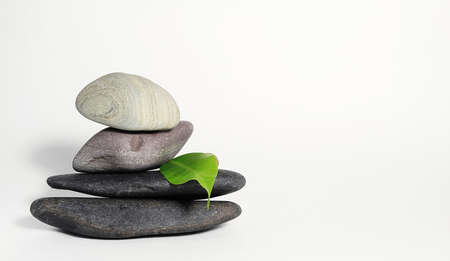1. Introduction to Feng Shui and Its Relevance in Modern America
Feng Shui, often translated as “wind and water,” is an ancient Chinese practice that has been shaping living spaces for thousands of years. It is based on the idea that the environment we live and work in can greatly influence our well-being, happiness, and even success. The fundamental principles of Feng Shui—Qi (energy flow), Yin-Yang (balance), and the Five Elements (wood, fire, earth, metal, water)—are at the core of this philosophy.
In todays fast-paced American society, many people are seeking ways to create homes and workplaces that support their health, productivity, and peace of mind. As a result, Feng Shui is becoming increasingly popular across the United States. Americans are drawn to its practical approach to organizing space and creating harmony in both personal and professional environments.
The Historical Roots of Feng Shui
Feng Shui originated in ancient China over 3,000 years ago. Traditionally, it was used to determine the most auspicious locations for villages, homes, and gravesites. The main goal was always to achieve balance with nature and harness positive energy or Qi. Over time, these techniques evolved into a comprehensive system for designing harmonious spaces.
Core Philosophy of Feng Shui
At its heart, Feng Shui teaches us how to arrange our surroundings so that energy flows smoothly and supports our lives. The table below summarizes the key elements:
| Principle | Description | Practical Example |
|---|---|---|
| Qi | Vital life force or energy present everywhere | Keeping entryways clear to allow energy flow |
| Yin-Yang | The dynamic balance between opposites | Balancing light and dark colors in a room |
| Five Elements | Wood, Fire, Earth, Metal, Water – each representing different qualities | Using plants (wood) or fountains (water) to enhance specific areas |
Why Feng Shui Resonates with Contemporary American Lifestyles
With growing interest in wellness and mindfulness, more Americans are turning to Feng Shui for guidance on creating healthier environments. Whether its arranging an office for better productivity or setting up a cozy living room for relaxation, the principles of Feng Shui offer easy-to-follow steps that anyone can use. By focusing on balance and natural flow, this ancient wisdom fits perfectly with modern desires for comfort and connection—helping people feel more at ease at home and work.
2. Understanding Qi: The Flow of Energy
What Is Qi in Feng Shui?
Qi (pronounced “chee”) is the core concept in Feng Shui, often described as the invisible life force or energy that flows through every space and living being. In Feng Shui, a balanced and vibrant flow of Qi is essential for health, happiness, and prosperity. Think of Qi as the “vibe” or atmosphere in your home or office—the subtle feeling you get when you walk into a room.
How Qi Affects Well-Being
When Qi moves freely and harmoniously, it promotes positive feelings, productivity, and overall wellness. If Qi is blocked or stagnant, it can lead to stress, discomfort, or lack of motivation. In American homes and offices, this might look like cluttered entryways, poorly lit rooms, or awkward furniture arrangements that make movement difficult.
Signs of Good vs. Bad Qi
| Good Qi | Bad Qi |
|---|---|
| Open, uncluttered spaces | Overcrowded rooms |
| Plenty of natural light | Dark or dim corners |
| Fresh air circulation | Stale or stuffy air |
| Furniture arranged for easy movement | Blocked pathways |
| Lively plants and décor | Dead plants or broken items |
Practical Ways to Enhance Positive Qi in American Homes and Offices
1. Clear Clutter Regularly
Clutter blocks the flow of energy. Make it a habit to keep entryways, desks, and common areas tidy. Donate unused items and organize storage spaces to let Qi move smoothly.
2. Maximize Natural Light and Fresh Air
Open windows whenever possible and use light curtains to allow sunlight in. Consider adding air-purifying plants like snake plant or pothos to improve air quality and boost energy.
3. Arrange Furniture Thoughtfully
Create clear pathways by positioning furniture so people can move around easily. Avoid placing large pieces directly in front of doors or walkways.
4. Repair or Replace Broken Items Promptly
Broken objects can trap negative energy. Fix leaky faucets, squeaky doors, or cracked mirrors to maintain a healthy flow of Qi.
5. Add Personal Touches That Uplift Mood
Decorate with meaningful art, family photos, or favorite colors that make you feel comfortable and inspired in your space.
The Role of Qi in Everyday Life
The principles of Feng Shui can be applied whether you live in a suburban house in Texas or work in a high-rise office in New York City. By paying attention to how energy flows through your environment—and making simple changes—you can create spaces that feel more inviting, calm, and energizing every day.
![]()
3. Yin and Yang: Achieving Balance in Your Space
Understanding Yin and Yang in Feng Shui
Yin and yang are two fundamental forces at the heart of Feng Shui. Yin represents qualities like quietness, softness, and darkness, while yang stands for brightness, energy, and activity. In any home or space, both yin and yang should be present and balanced to create a comfortable and harmonious environment.
How to Assess Yin-Yang Balance in Your Home
When looking at your living spaces through the lens of yin-yang, consider the activities that happen in each room. Bedrooms and meditation areas benefit from more yin (calming) energy, while kitchens and living rooms thrive with more yang (active) energy. Here’s a simple table to help you identify common features:
| Space/Element | Yin Qualities | Yang Qualities |
|---|---|---|
| Lighting | Soft, dim lights Candles |
Bright overhead lights Natural sunlight |
| Colors | Pale blues, grays, muted tones | Bold reds, yellows, vibrant shades |
| Materials | Plush fabrics Curtains Cushions |
Sleek surfaces Metal décor Hardwood floors |
| Furniture Arrangement | Circular shapes Low seating Cozy nooks |
Straight lines Tall shelves Open layouts |
Balancing Yin and Yang in American Interiors
Many American homes feature open-plan living spaces with large windows—a classic example of strong yang energy. To avoid feeling overstimulated or restless, try introducing yin elements: add area rugs, hang soft curtains, or create a reading corner with plush chairs.
If your bedroom feels too dark or heavy (excessive yin), introduce yang with brighter bedding colors, mirrors to reflect light, or fresh flowers on the nightstand.
Real-Life Example: The American Living Room
An open-concept living room with hardwood floors, lots of daylight, and high ceilings is very yang. To balance this space:
- Add a deep-blue throw blanket to the sofa for yin softness.
- Place table lamps with warm bulbs on side tables for gentle lighting.
- Use houseplants to soften sharp corners and add calming natural energy.
- Create a cozy reading nook in one corner using a soft armchair and textured rug.
The Takeaway: Everyday Yin-Yang Adjustments
You don’t have to overhaul your home to achieve balance. Simple changes—like adjusting lighting or adding cushions—can make your space feel more welcoming and peaceful. By understanding yin and yang within the context of your daily life and American design preferences, you can easily create an environment that feels just right.
4. The Five Elements: Wood, Fire, Earth, Metal, and Water
Understanding the Five Elements Theory
The Five Elements—Wood, Fire, Earth, Metal, and Water—are a core concept in Feng Shui. Each element represents certain qualities and energies that influence how we feel in our homes and workplaces. When these elements are balanced, spaces become more harmonious and supportive of well-being.
How the Five Elements Relate to Your Space
Each element connects to specific colors, shapes, materials, and even emotions. Integrating all five into your environment helps create a vibrant and peaceful atmosphere. Below is a quick guide on what each element symbolizes and easy ways to bring them into your home or office using common American decor items:
| Element | Symbolizes | Colors | Shapes | Easy Decor Ideas (American Style) |
|---|---|---|---|---|
| Wood | Growth, vitality, flexibility | Green, brown | Rectangular, tall | Potted plants, wooden shelves, oak furniture |
| Fire | Passion, energy, transformation | Red, orange, purple | Triangle, pointed | Candles, fireplaces, red throw pillows or art pieces |
| Earth | Stability, nourishment, grounding | Yellow, beige, tan | Square, flat surfaces | Ceramic vases, area rugs in earth tones, clay pots |
| Metal | Clarity, precision, efficiency | White, gray, metallics | Circular, round | Stainless steel fixtures, metal picture frames, silver lamps |
| Water | Flow, wisdom, relaxation | Blue, black | Wavy shapes | Aquariums or fish bowls, water fountains, mirrors with blue frames |
Actionable Suggestions for Balancing the Elements at Home or Work
Add Natural Wood Accents (Wood Element)
Add a few leafy plants or use wood picture frames on your walls. A simple bookshelf made of natural wood can also invite the energy of growth and renewal.
Create a Cozy Focal Point (Fire Element)
If you have a fireplace or candles in your living room or office lounge area—even an electric fireplace works!—these can represent fire. Red accents like cushions or a bold piece of artwork also do the trick.
Select Grounding Pieces (Earth Element)
Ceramic planters on window sills or a large beige rug under your coffee table help ground the space. Earthy tones in your bedding or sofa throws add extra stability.
Add Sleek Metallic Touches (Metal Element)
A stainless steel lamp on your desk or metal wall decor brings clarity and focus. Even something as simple as metallic drawer handles can introduce this element effectively.
Breathe Life with Water Features (Water Element)
A small desktop fountain or an aquarium adds calming movement and sound. Alternatively, mirrors (which reflect) can stand in for water if placed thoughtfully—like across from a window to “double” natural light.
Merging Feng Shui with American Style Decor
You don’t need to completely redecorate to benefit from the Five Elements theory. With just a few purposeful touches—a potted plant here (wood), a metal-framed mirror there (metal), a soft blue pillow (water), an earthy ceramic mug (earth), or a bright candle (fire)—you can easily blend Feng Shui principles into any American home or workspace for greater balance and positive energy.
5. Applying Feng Shui Principles in American Homes and Offices
Step-by-Step Guidance for Different American Spaces
Feng Shui is about creating a space where Qi (energy) flows smoothly, balancing Yin-Yang energies, and incorporating the Five Elements. In the context of American homes and offices, you can use these core principles to enhance comfort, productivity, and well-being. Here’s how you can apply them step by step for different types of spaces.
Urban Apartments
- Clear Clutter: Start by decluttering main entryways, living rooms, and workspaces to allow fresh Qi to circulate.
- Balance Light: Use a mix of natural and artificial lighting to create a harmonious Yin-Yang balance. Add mirrors opposite windows to reflect light and expand energy flow.
- The Five Elements:
Element How to Add It Wood Potted plants or wooden décor Fire Candles or red/orange accents Earth Ceramic pots or earth-toned fabrics Metal Metal frames or decorative bowls Water Aquariums or blue/black accessories - Furniture Arrangement: Place beds and sofas so that you can see the door but are not directly in line with it (the “command position”) for better security and relaxation.
- Scent and Sound: Use essential oil diffusers or soft music to uplift the mood and promote positive Qi flow.
Suburban Homes
- Main Entrance Focus: Keep pathways clear outside your home to welcome good energy. Add a welcome mat in earth tones for grounding.
- Create Zones: Designate areas for rest (Yin) and activity (Yang). For example, keep bedrooms calm with soft colors and reserve bright colors for family rooms or kitchens.
- The Five Elements in Each Room: Try to include all five elements in each main room using the table above as a reference.
- Nourish Outdoors: Use landscaping—like flower beds (Wood/Fire), stones (Earth), or water features—to harmonize exterior Qi with indoor spaces.
- Avoid Sharp Angles: Round off sharp furniture corners with covers or place plants nearby to soften harsh energy.
Modern Workplaces
- Desk Placement: Position desks facing the entrance but not directly aligned with the door, supporting alertness and control over your environment.
- Natural Elements: Incorporate small plants (Wood), metallic desk organizers (Metal), or even a desktop water fountain (Water) for a balanced workspace.
- Lighting Matters: Use adjustable task lighting to adapt to different tasks, balancing Yin (soft light) with Yang (brighter light).
- Cubicle Solutions: Hang calming art or use colored dividers that represent the Five Elements to break up monotony and boost energy flow.
- Avoid Clutter Build-Up: At the end of each day, tidy up your desk—this keeps energy fresh and helps you start each morning with clarity.
Quick Reference Table: Feng Shui Tips by Space Type
| Space Type | Main Focus Areas | Main Feng Shui Tip |
|---|---|---|
| Urban Apartment | Main entry, lighting, clutter control | Add mirrors for light; use multi-functional décor to introduce Five Elements. |
| Suburban Home | Main entrance, outdoor/indoor connection, zoning rooms | Create clear pathways; balance active/rest areas; integrate elements into décor. |
| Modern Workplace | Desk placement, office layout, lighting quality | Sit in command position; add desk plants; keep workspace tidy daily. |
Your Feng Shui Journey Starts Here!
No matter where you live or work in America—whether it’s a high-rise apartment, cozy suburban house, or open-plan office—these Feng Shui steps make it easy to bring harmony, comfort, and positive energy into your everyday life. Just start with one tip at a time and notice how your space feels more welcoming and supportive!


